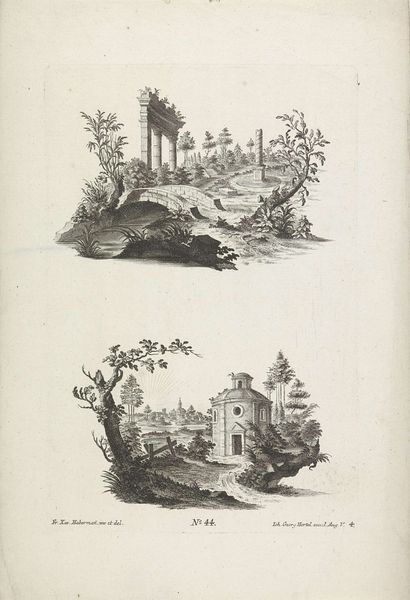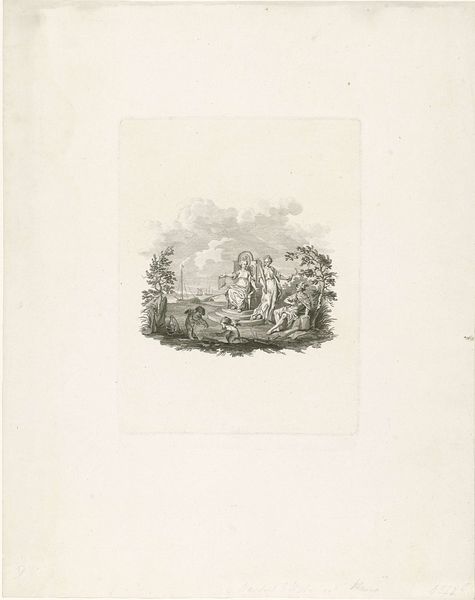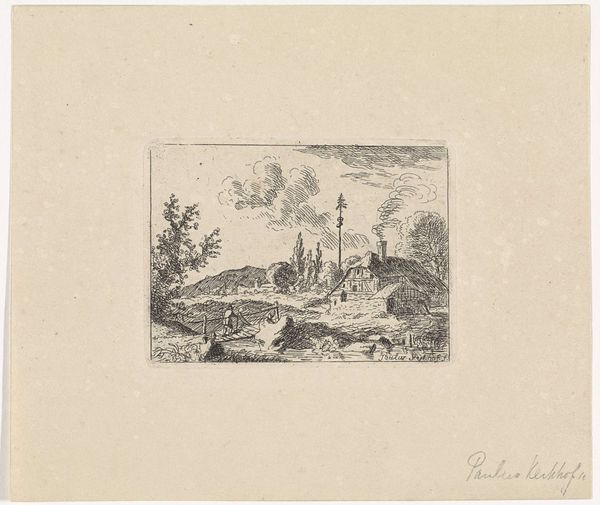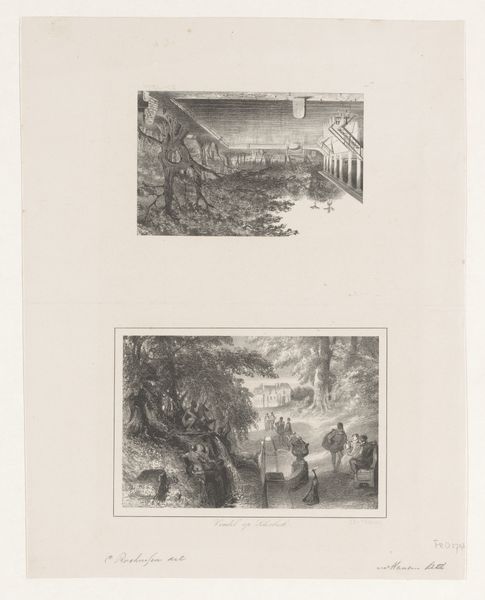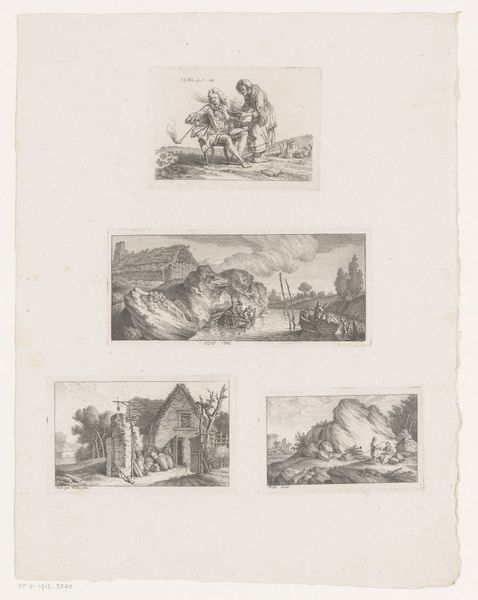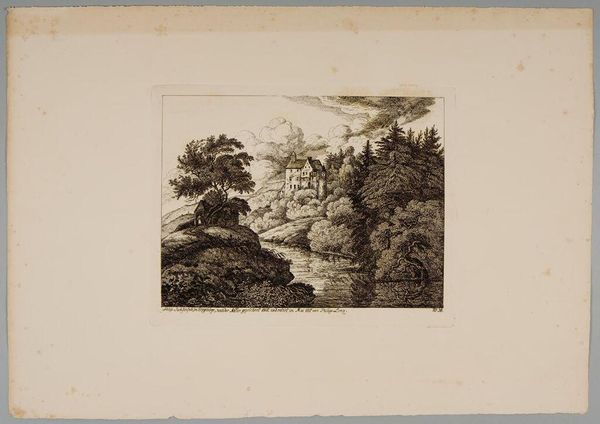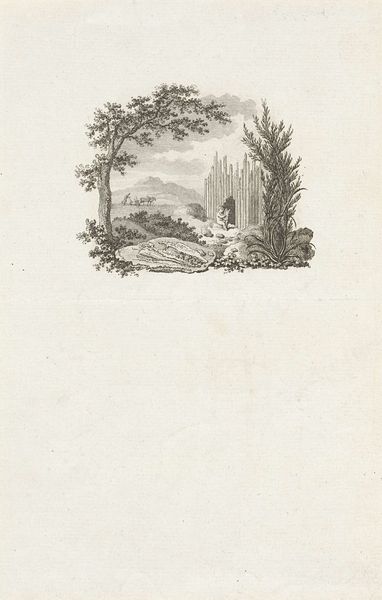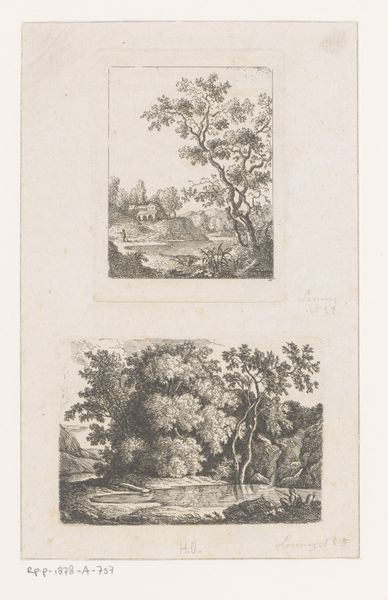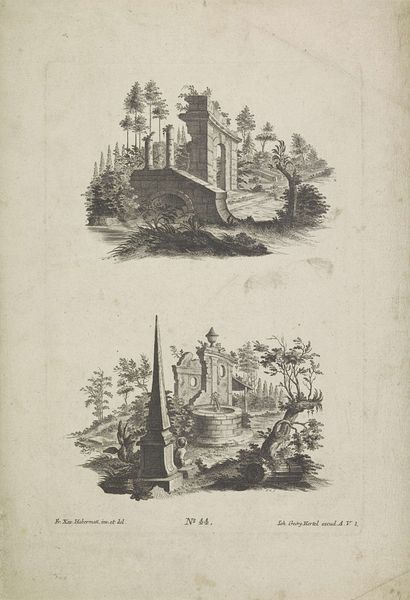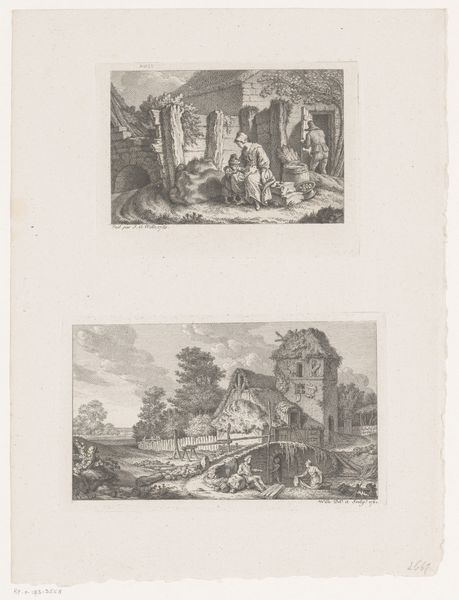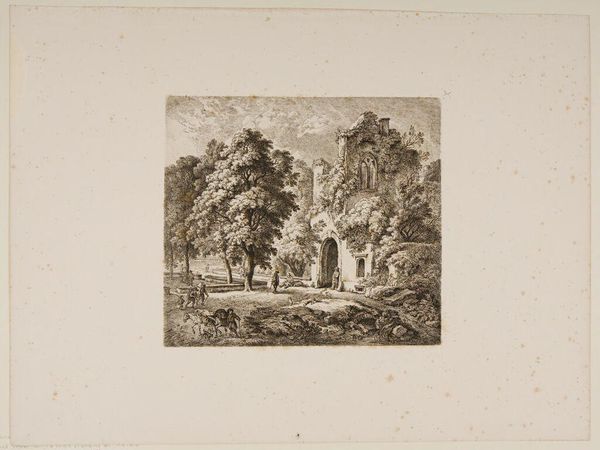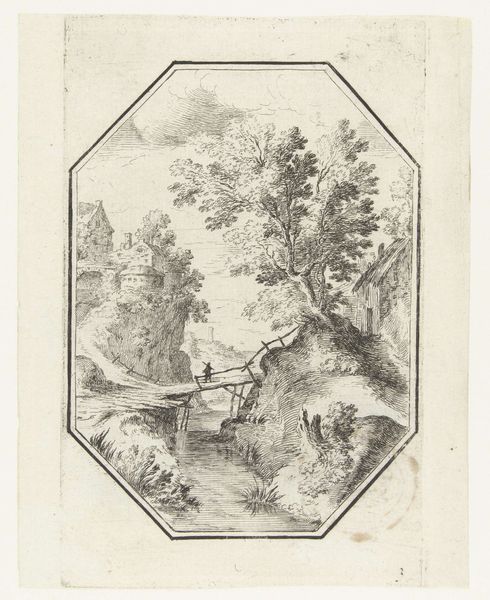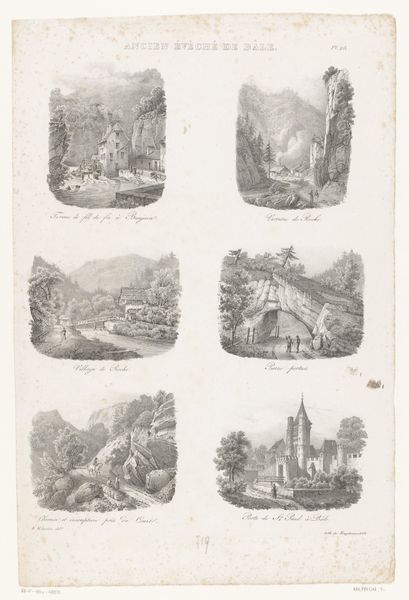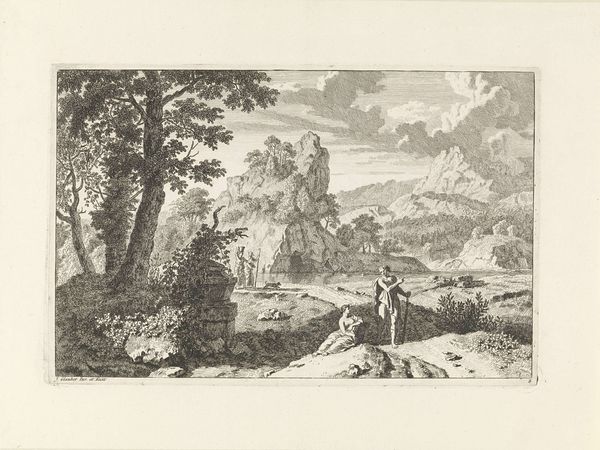
print, etching
#
neoclacissism
# print
#
etching
#
old engraving style
#
landscape
#
geometric
#
history-painting
Dimensions: height 281 mm, width 189 mm
Copyright: Rijks Museum: Open Domain
Curator: Ah, yes, "Landscapes with Arches", created sometime between 1731 and 1775. It's an etching. The artist credited is Emanuel Eichel. Editor: It whispers of solitude, doesn't it? Like a dream you can’t quite grasp slipping through your fingers. Curator: Precisely. Etchings from this era often explored these melancholic themes, focusing on classical ruins... Editor: Ruin as a metaphor for the ephemeral nature of existence? That almost feels like a trope these days. But look closer. Curator: What do you see? Editor: Notice how the geometric forms of the arches interact with the wild, untamed landscape. It’s more than just ruins. It’s a conversation, perhaps a tension, between human ambition and nature’s persistent reclamation. Curator: Eichel certainly mastered that dialogue, a cornerstone of Neoclassicism's reflections on grandeur. I read the use of these ordered shapes also symbolizes lost histories, like fragmented memories, so there's a longing to capture the unrecoverable past. Editor: Yes! The arch—a symbol of triumph, stability—here broken, overgrown. Consider, too, how deeply embedded in cultural memory that form is, tracing back to ancient Rome and its ideas of lasting empire. Its use would automatically spark feelings of awe for its grandeur while facing its present state. Curator: That melancholic thread pulls at the viewer still. Do you know it does give one pause for thought on what lasts? Editor: In these quiet images, something primal resonates. The broken arch whispers, yes, but the gnarled tree shouts just as loud: life, decay, the eternal cycle. And art – if we are lucky, the echo of all of it. Curator: Well said! It’s an old engraving style of landscape art, which speaks to lasting traditions and invites us all to become history painters. Editor: And ultimately, art, which prompts us to be listeners, too.
Comments
No comments
Be the first to comment and join the conversation on the ultimate creative platform.
